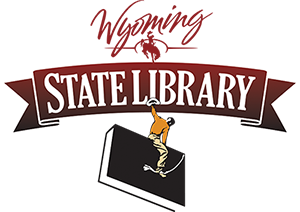
From Laramie County Library System
By Kasey Storey, Communications Coordinator
On January 15, a superhero visited the Laramie County Library. He didn’t have a cape, a mask, or flashy tights and he walked in through the front doors rather than flying through a window or crashing through a wall. He didn’t display any spidey senses, super-speed, or unworldly strength, but he did wear one indication of his superpowers: a beautifully beaded pendant hanging around his neck. The intricate array of vivid and delicate beads formed a bright superhero emblem that was part Superman symbol and part Flash sign. With his dark framed glasses and light brown blazer, Lee Francis IV appeared to be somewhat of a Clark Kent figure: subtle in appearance, but with an air that was undeniably super.
In fact, Lee Francis IV has many superpowers. He’s an educator with over 15 years’ experience in the classroom, a business owner who runs his own bookstore named Red Planet Books and Comics and printing press named Native Realities, a comic book creator, a founder of Indigenous Comic Con, an activist, a poet, a writer, and a speaker. As a member of the Laguna Pueblo Tribe, Lee Francis IV is also a powerful advocate for Indigenous peoples and their right to be represented accurately in pop culture.
His ability to tell stories, however, may be his strongest superpower. He weaves entrancing tales that enrapture audiences and change their perceptions of Native American representations in the past, present and future, and he came to the Laramie County Library to do just that.
On January 15, Lee Francis IV gave a presentation about storytelling, during which he outlined the historical representations of Native Americans. He fit them into four chronological categories: the noble savage, the vanishing Indian, the red devil, and the tragic chief or neo-noble savage. Utilizing examples from paintings, books, television shows, photographs, and movies, he illustrated how these essentialized representations of Native Americans were damaging to the psyches of individuals in the community. He said that many of these images “reinforced the idea that Native Americans were a historical relic,” and that because of these images, indigenous peoples were often “stripped of imagination of what they could be.”
After detailing the harmful representations of the past, Lee Francis IV moved into the future and changed the narrative, revealing his awe-inspiring superpowers in the process. Imbuing every claim with a resounding optimism, he talked about the next stage of Native American representations, calling it “Indigenous Futurisms.” He began to tell the crowd about all of the comic books, video games, movies, television shows, and artwork that present Native Americans as the dynamic, diverse, modern, and powerful heroes they are: heroes whose impact expand far beyond the reservation. He spoke about Navajo code talkers, empowered Native women, and Indigenous superheroes created by people like Jon Proudstar who realized that there was no contemporary hero saving children like his own on the reservations.
Lee Francis IV stated that the beautiful part about storytelling is its ability to create empathy, build bridges, and impact communities. He said that Native American tradition should not be left in the past, but rather carried into the future like a backpack, where it can be used in a contemporary context. He then asked the fixated audience if they were heroes and asked how they told their own stories. He implored them to think of the power stories have to change the world.
So, while he may not be able to travel back in time, he is able to look back and analyze the harmful misrepresentations of native people from the past. While he may not be able to jump over buildings in a single leap, he is able to make leaps in the way Native people are represented in the media. And while he may not be able to read minds, he is able to captivate an entire room of people and make them think differently about Native American stereotypes.
Like any superhero tale, he ended his presentation with hope, stating, “I hope that you’ve had fun, I hope I’ve sparked your imagination, and I hope I’ve unleashed your Indigenous Imagination.” The crowd stood and applauded him, and for a moment it seemed like he would don a cape and fly off the stage like the superhero he is.
